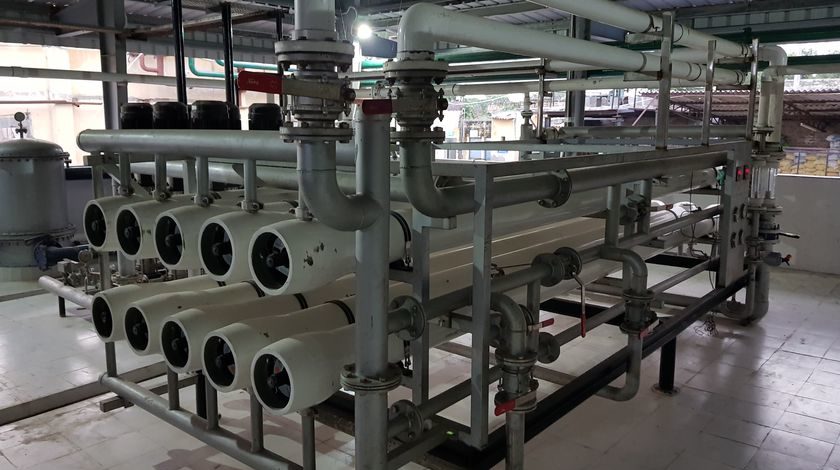Removing of dissolved calcium and magnesium salt that cause hardness in water. Water supply passes through the water softener over resin beds, rows of resin beads perform an ion-exchange. The resin beads chemically attract the unwanted ‘hard’ mineral ions and exchange them with sodium ions. Softener resin is mainly strong acid Cation resin.
These “hardness ions” cause three major kinds of undesired effects
- Metal ions react with soaps (Metal ions react with soap to form SCUM which is a insoluble precipitate) Most visibly, metal ions react with soaps and calcium-sensitive detergents, hindering their ability to lather and forming a precipitate the familiar “bathtub ring”. Presence of “hardness ions” also inhibits the cleaning effect of detergent formulations.
- calcium and magnesium carbonates tend to precipitate out as hard deposits to the surfaces of pipes and heat exchanger surfaces. This caused by thermal decomposition of bi-carbonate ions but also happens to some level even in the absence of such ions. The consequential build-up of scale can restrict water flow in pipes. In boilers, the deposits act as an insulation that impairs the flow of heat into water, reducing the heating efficiency. In a pressurized system, this can lead to failure of the boiler
- The presence of ions in an electrolyte, hard water, can also lead to galvanic corrosion, in which one metal will preferentially corrode when in contact with another type of metal, when both are in contact with an electrolyte. However the sodium (or Potassium) ions released during straight water softening are much more electrolytic active than the calcium or Magnesium ions that they replace and galvanic corrosion would be expected to be considerably increased by water softening and not decreased. Similarly if any lead plumbing is in use, softened water is likely to be substantially more plumb-solvent than hard water
What does a water softener plant do?
Water softening methods normally are one of the followings.
- Soda lime treatment
- Ion exchange resin based
- Nano filtration
- Reverse Osmosis
what is ion-exchange resin?
ion-exchange resin is also known as ion-exchange polymer . that acts as a medium .It is an insoluble micro beads usually white or yellowish, from an organic polymer substrate. The beads are typically permeable providing a large surface area on and inside them where the trapping of ions occurs along with the accompanying release of other ions, and thus the process is called ion exchange. There are multiple types of ion-exchange resin. Most commercial resins are made of polystyrene sulfonate
How does ion exchange resin work?
ion exchange is a reversible interchange of charged particles or ions with those of like charge. This occurs when ions present on an insoluble resin matrix effectively exchange places with ions of a similar charge that are present in a surrounding solution.
Regeneration:
Resins become loaded with undesirable cations and anions they gradually lose their effectiveness and must be regenerated. If a cationic resin is used (to remove Calcium and Magnesium ions) then regeneration is usually effected by passing concentrated brine, usually of sodium chloride or potassium chloride, or hydrochloric acid solution through them. For anionic resins a solution of sodium or potassium hydroxide (Lye) is used. Most of the salts used for regeneration gets flushed out of the system and may be released into the soil or sewer. These processes can be damaging to the environment, especially in regions. Some jurisdictions ban such release and require users to dispose of the spent brine at an permitted site or to use a commercial service company. Most water softener manufacturers provide metered control

